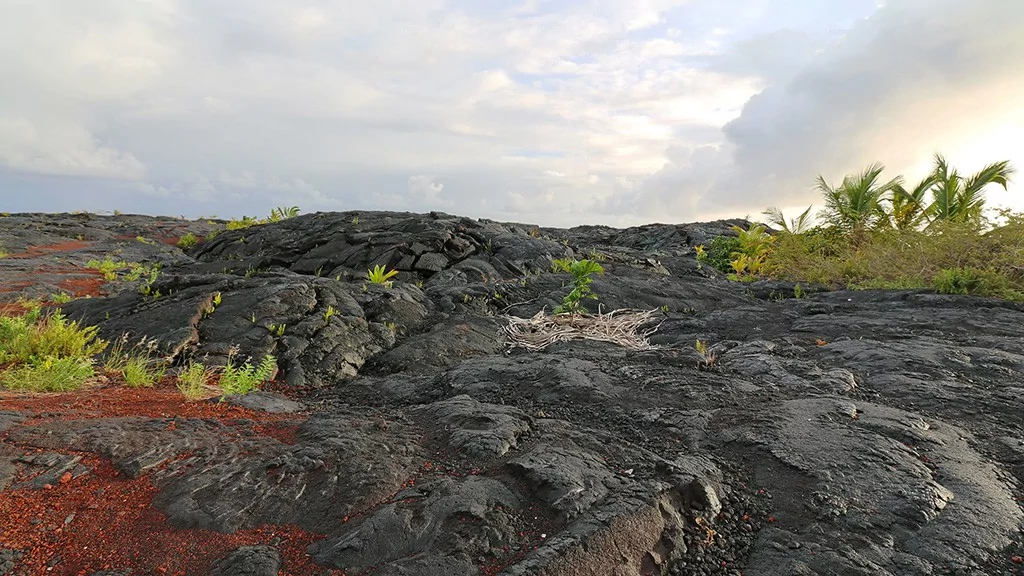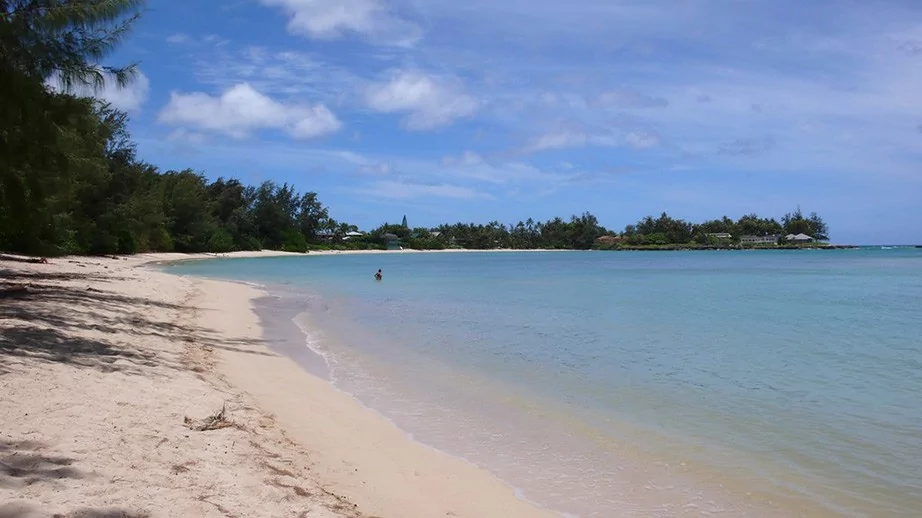
Whether you’re discovering secret waterfalls or hiking on active volcanoes, Hawaii is not only the ideal place for avid explorers to head on vacation, but also where sun-lovers flock to experience dreamy beaches and epic surf. Despite its miniscule land size, Hawaii has whopping 750 miles of combined coastline, the fourth longest in the U.S, surpassed only by Alaska, Florida and California. As the archipelago is blessed with insanely long oceanfront, it should come as no surprise that this pacific heaven has scores of secluded coves and beaches that offer painfully beautiful scenery alongside endless peace and tranquility.
Located on the Big Island, Kaimu Beach Park is a nascent black sand beach in Puna District, and in spite of its unsuitability for swimming and snorkeling, it is one of the most intriguing beaches found anywhere in Hawaii.
Visitors to the beach are able to witness firsthand the destructive power of the nearby Kilauea Volcano. After an eruption in 1990, the once golden beach lined with palm trees was covered with molten lava, and the infrastructure in the surrounding areas was destroyed.
To get to the black sand beach, you can park in the designated lot and walk for ten minutes across the solidified lava that takes you down to the water’s edge. For those with an active imagination, it’s easy to think of the lava that once flowed here, melting everything in its path. It’s a sobering reminder of the power and unpredictability of nature on a volcanic island such as Hawaii.
Instead of swimwear and sandals, make sure you’re wearing decent shoes and are covered from the sun. The currents and waves that batter the shore here make it unsafe for swimming, so it’s best just to enjoy a walk across the black sand and keep your swimming costume dry for one of the other beaches.

The dried lava formations on Kaimu Beach Park
photography by: Robert Linsdell
One of the Mahaulepu beaches that form the southern shore of Kauai, Haula beach is a well-kept secret and is often passed up by the vast swathes of tourists that visit Hawaii every year. On arrival, it doesn’t look overly special, often strewn with natural debris and only having a small section of sand that is comfortable to relax upon.
If you walk past the initial opening to the beach, you will visit the highest sand dunes found anywhere on the south shore, which has been shaped by the constant thrashing of the waves and adds to the rugged natural beauty of the area. Within the dunes are jagged spires and caves, through which the adventurous can wander.
And it is here that you truly notice what is so special about the beach: the dreamy panoramic views enjoyed when looking out to sea. The craggy rocks and caves that form the landscape here provide a sense of otherworldliness, and given the solitude enjoyed by visitors to this hard-to-reach cove, it can really feel like you’re in a world of your own.
Due to the rocky offshore bottom, swimming at Haula beach isn’t recommended, but if you make the off-road trek to get here, you’re likely to have the place all to yourself, with perhaps only a visiting local fisherman as company.

The craggy terrain of Haula Beach
photography by: Paul Schultz
A much quieter alternative to the nearby Turtle Bay Resort, a visit to Kawela Bay Beach Park on Oahu’s north shore is well worth the additional effort it takes to get there. In spite of the fact that Kawela Bay has featured in both Forgetting Sarah Marshall and Lost, it doesn’t tend to draw a lot of international tourists and retains much of its charm as a locals’ beach.
It has recently been protected by the Trust for Public Land in Hawaii, meaning this unspoiled coastal area is unlikely to be ruined by overdevelopment anytime soon. Visitors who make it to Kawela Bay often head out into the water, as the tame waves found here are ideal for swimming and splashing about on bodyboards.
You can also enjoy snorkeling at the eastern end of Kawela bay, where a shallow reef presents you with an opportunity to see green turtles and an abundance of other sea life. Just be aware that sea turtles are threatened, so don’t try and touch them when you’re in the water with them.
Alternatively, if you’re the kind of person that enjoys the tranquility of the coast and you only want to sit in the sun with a crime novel, then Kawela bay is ideal for you too. Because it’s off-the-beaten-track and close to Turtle Bay, relatively few tourists make the additional effort to come here. While you might not have the beach all to yourself, you will certainly have large areas of golden sand to choose from and set up for the day.

Kawela Bay's strip of white sand
photography by: Max Kiesler
Honokalani is a black sand beach positioned in Waianapanapa State Park and plays a significant role in the cultural identity of Hawaiians. The black sand of Honokalani is framed by the colorful tropical plants that abound on the coastline, presenting stunning photo opportunities for those that take a walk down to the water’s edge.
Waianapanapa means “glistening water” and it’s clear to see why the park has such a name. When the sun’s out, it’s hard not to stare out at the sight in front of you, where the crystal waves are illuminated in stark contrast to the black sands upon which they lap.
Although you will be tempted to dive straight into the stunning waters, swimming isn’t advised here due to the sharp drop from the shoreline, as well as the fierce rip currents. At certain times in the summer, the waters can be calm and suitable for swimming, but it’s always best to seek local advice before diving in.
When visiting the beach, consider walking the Ke Ala Loa o Maui (Piilani Trail), which is a three-mile round trip hike set against the shore. As well as some wonderful photo opportunities, you will be able to look out to the sea and watch the waves batter the cliffs, just before heading back to the glorious black sand beach to sunbathe.
If you’re tempted to take a memento from the beach in the form of a little jar of black sand, then resist the urge as according to the legend, Pele’s Curse falls upon anyone who takes a natural resource from Hawaii. As the Goddess of Volcanoes and Fire, she’s certainly someone you should avoid upsetting at all costs. If that’s not enough to worry you, be a responsible traveler and leave the natural world as you find it. It’s a criminal offense to take black sand from Hawaii’s beaches.

Honokalani's spectacular sea-cave
photography by: Kirt Edblom
The smallest inhabited island that travelers are able to visit in Hawaii, Lanai is home to many luxurious resorts as well as a rugged and largely unspoiled coastline that is the perfect playground for visitors who revel in exploring off-the-beaten-path destinations.
Situated on the north-western end of Lanai, Polihua beach is almost two miles long of largely unspoiled white sand. Visitors require the assistance of a 4×4 to travel the rugged, four-mile trail that is the only way of accessing the beach, but it’s well worth the effort for those who make it here.
One of the most alluring features of Polihua beach is the fact that it is completely exposed to the elements. The waters surrounding the beach aren’t protected by reefs or rock formations, making swimming in the waters unsafe at any time of the year.
If you visit the beach during high winds, you might even get caught in a sandstorm; such is the exposed nature of the vast sands that make the beach appear so picturesque. Visiting on a calm day (weather-wise) is advised, as the beach is ideal for relaxing strolls and picnics.
If you arrive at Polihua in the winter months, you may catch a glimpse of the whale pods that pass close by the shore or some of the nesting green turtles that slowly make their way to the beach.

The large expanses of pristine golden sand in Polihua Beach
photography by: Forest and Kim Starr